Press, media, journalist — these are all labels that have been applied to our staff over the years, but none of them feel right. We're not part of some faceless corporate empire, and we don't sit at cubicles in a stuffy big-city office hammering away at our keyboards. We like to practice what we preach. That means getting outside and experiencing the world, learning new skills, testing gear, and sharing the lessons we've learned. So, when we get invited to media events, we're usually apprehensive. Far too many of them consist of little more than a continental breakfast and a Powerpoint presentation. But this was not the case at the Tread Agency Overland Summit, an invitation-only media event designed around practical hands-on experiences with camping, off-roading, and overland gear.
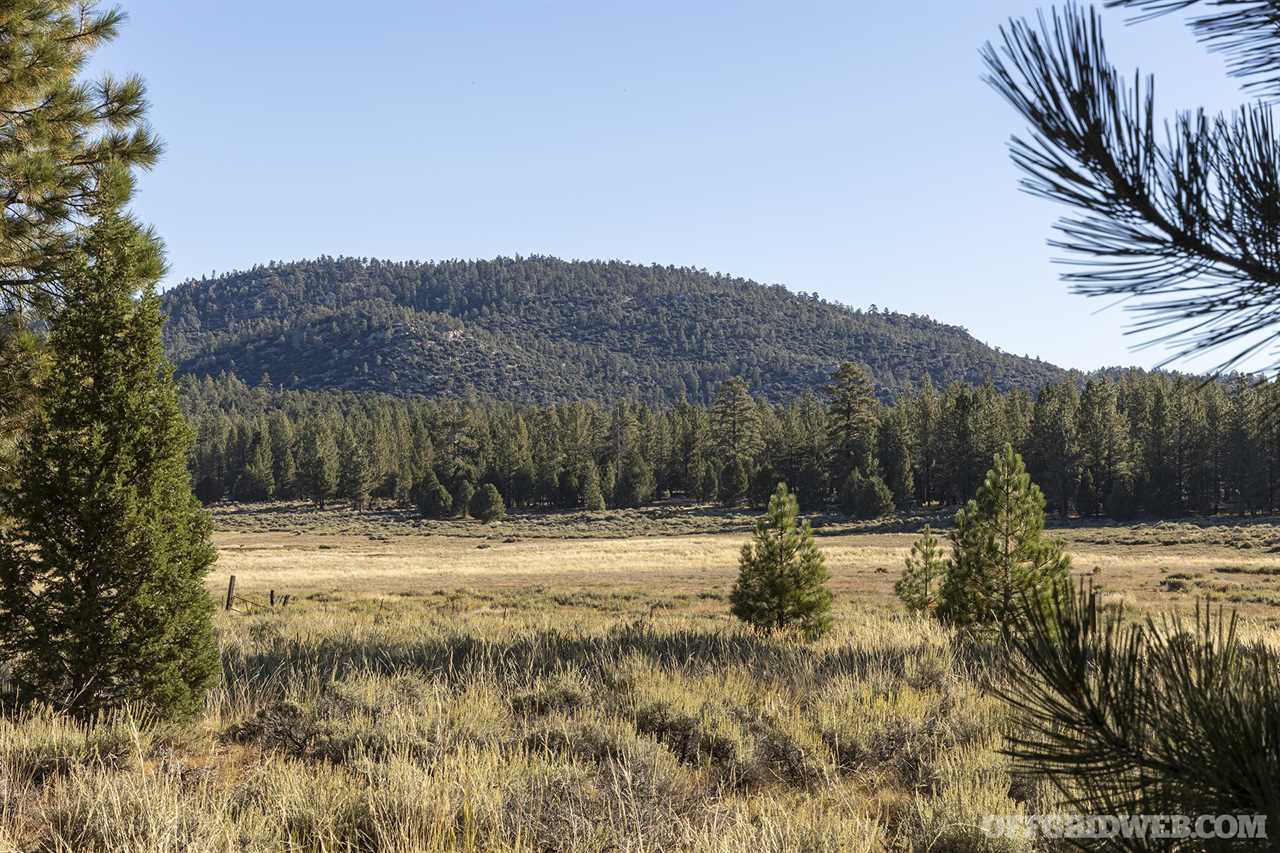
We spent three days at the event in the mountains outside Big Bear, California, along with a handful of other writers and content creators. While we were there, we got to check out some new products, learn from subject-matter experts, drive challenging trails in overland rigs, and enjoy tasty food, cold beers, and good company around the campfire each night. Read on for a recap of what we saw and learned at the Overland Summit.
Day One: Setting Up Camp
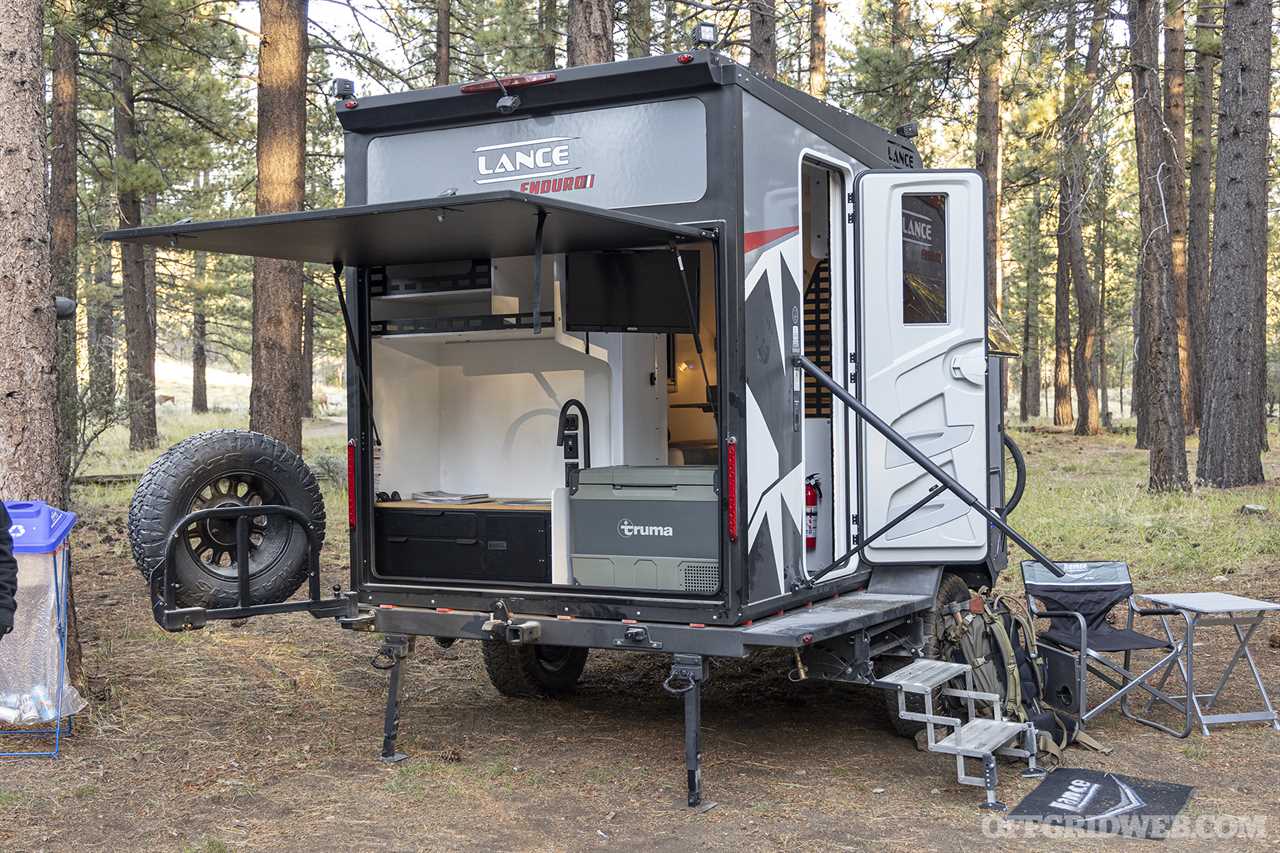
We arrived at the campsite in Holcomb Valley, a few miles north of Big Bear Lake in the San Bernardino Mountains, in the early afternoon. Although I came prepared to sleep in my 4Runner, a rep from Lance Campers offered me much cushier accommodations in one of the company's new Enduro overland trailers.
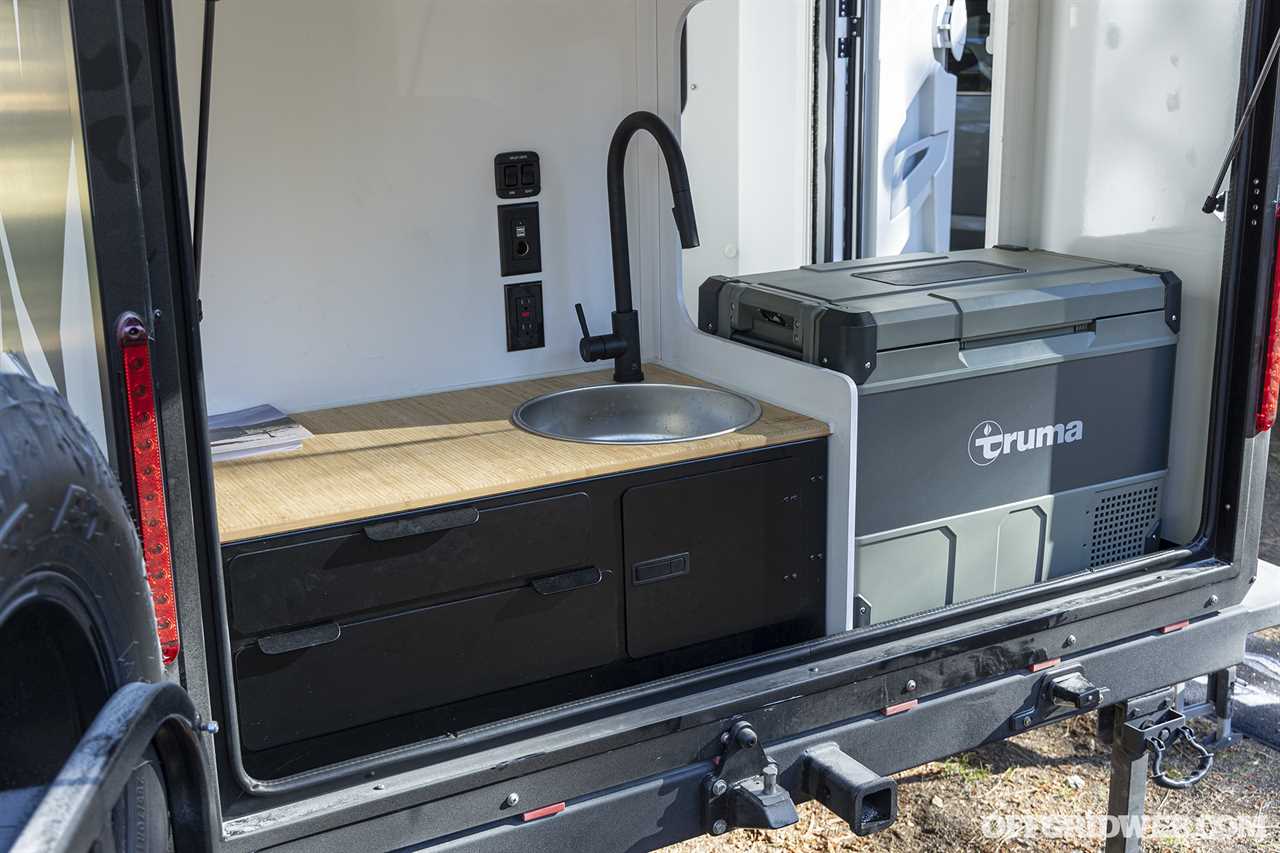
Marketed as a “luxury RV experience” in a lightweight overland trailer, it comes equipped with a kitchen area with sink and fridge/freezer, bathroom with stand-up shower, and U-shaped dinette that converts into a spacious 80×72-inch bed. It even has air conditioning, a furnace, rooftop solar panels, and an onboard water heater for hot showers.
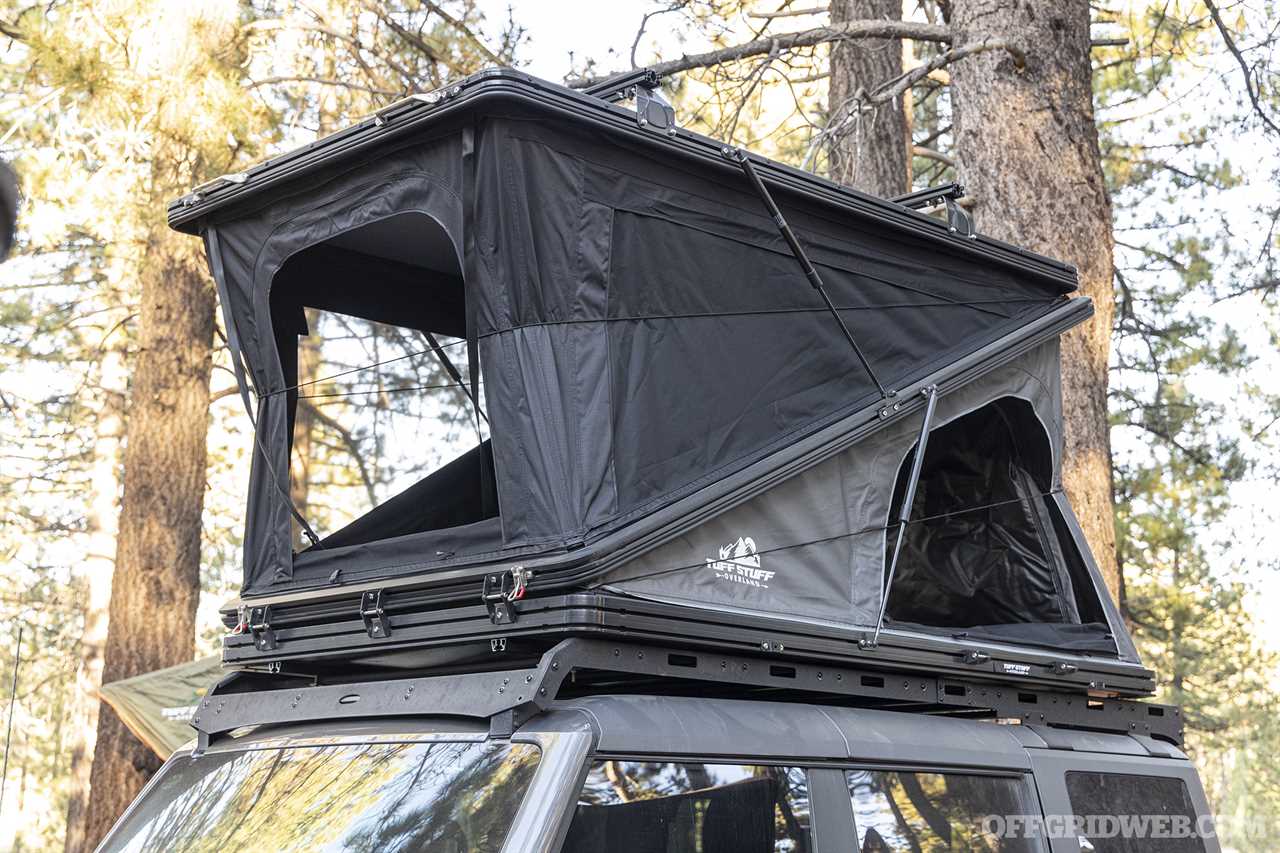
Some attendees stayed in rooftop tents, such as the Tuff Stuff Overland Alpine tent shown above. Unlike most rooftop tents, its Z-folding design can be opened in either direction to shield from wind and rain, or can be fully expanded to create a tall rectangular sleeping area. Tuff Stuff also brought some Halo campsite lights, which feature removable/rechargeable light pods and an integrated Bluetooth speaker.
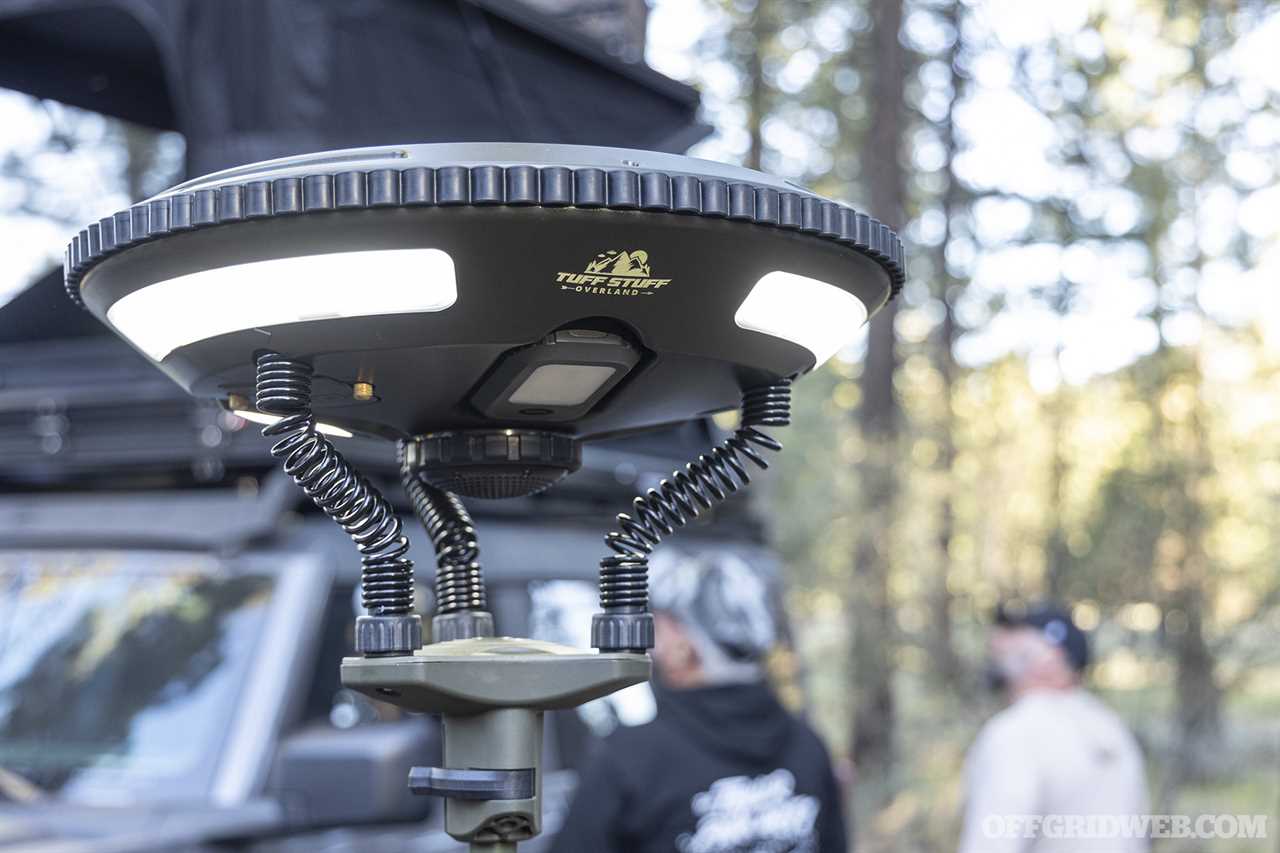
Other attendees camped in futuristic-looking ShiftPods. These portable structures (we wouldn't even call them tents) are built from composite “super fabrics” that reflect heat in the daytime, insulate against the cold at night, and can withstand winds of over 100mph.
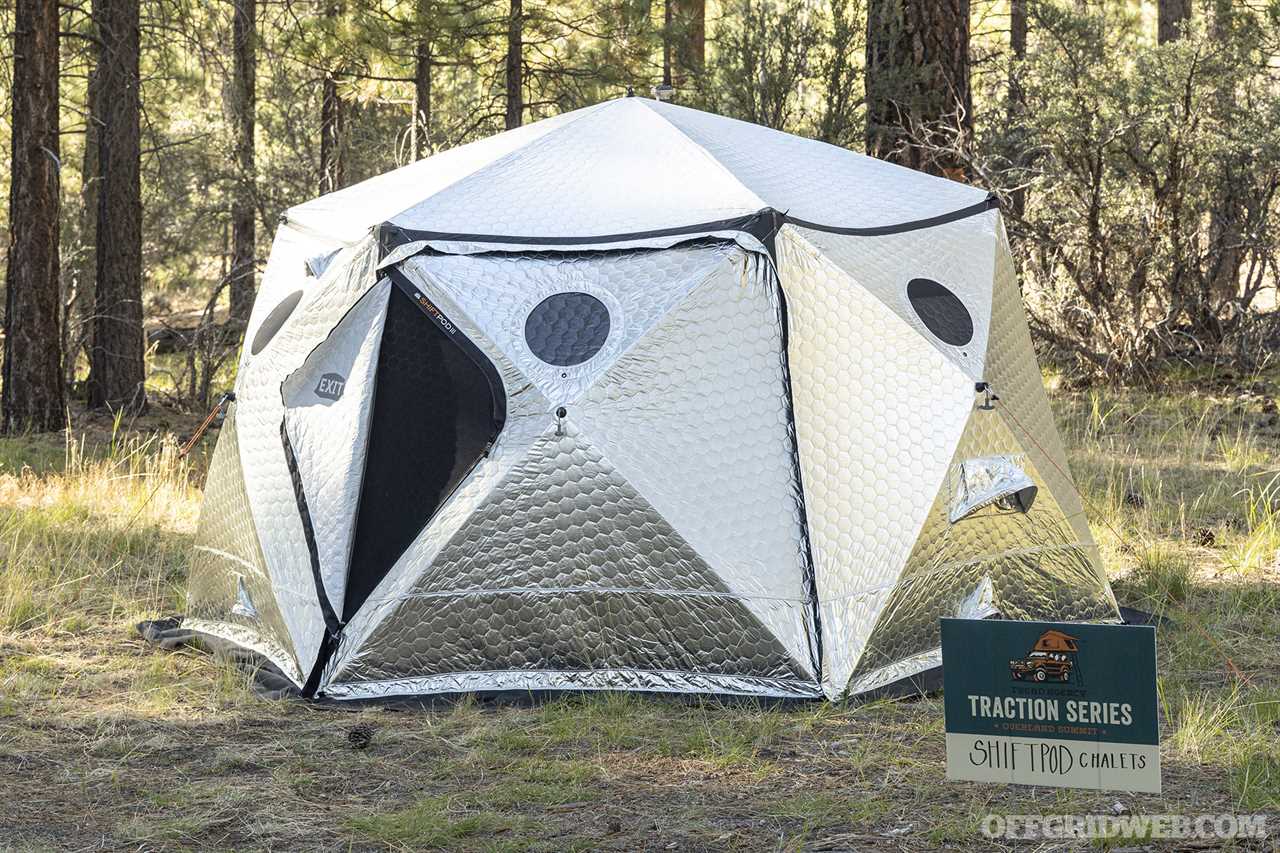
Once we were all settled, we cracked open some frosty Montucky Cold Snacks beers from nearby Canyon Coolers. The nearest water source was a nasty-looking trough, but a Guzzle H2O portable purification system processed it into clean and crystal clear drinking water.

At dinnertime, the crew from Hitchfire tossed some tri-tip onto one of their portable hitch-mounted grills, and served it up on their Ultimate Cook Station. The latter setup includes a sink for hand-washing and cleaning dishes.

After some time around the campfire, our last activity of the night was a trail run with Rigid Industries. We rode shotgun in their long-travel-equipped Tundra and saw the dramatic difference low-mounted amber lights can make in dusty conditions. High-mounted white lights are great for clear conditions, but on a dusty or foggy road, they can appear blinding. Amber lights cut through the haze and produce more contrast for better visibility.

Day Two: Off-Roading & Rock Crawling
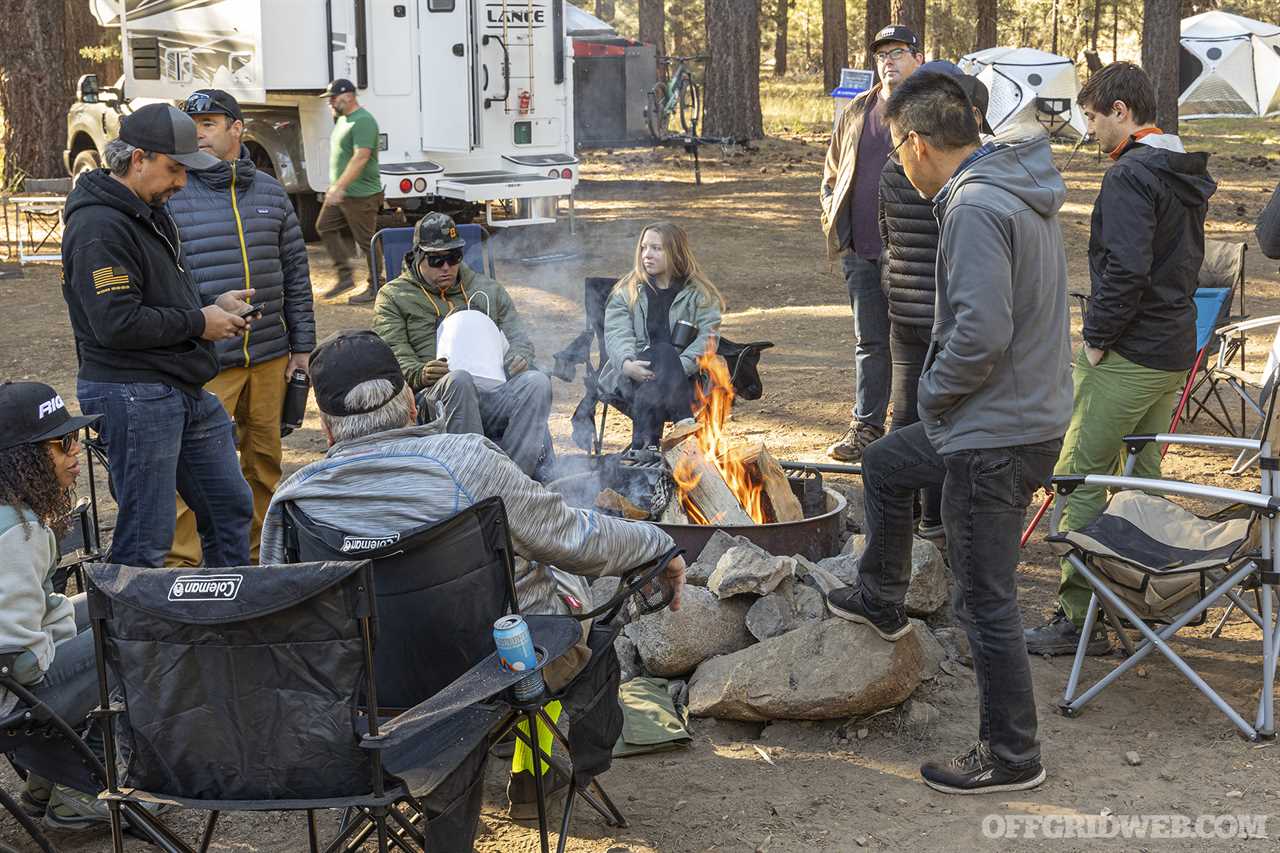
Waking up after a restful night in the Enduro camper, I made some coffee and warmed up by the fire until our planned departure time for the main event of the trip — a 7-hour trail run through the mountains. The route was planned by the team from Trailchasers Podcast, who also led the convoy and made sure no one got left behind. Printed maps were handed out to all attendees, and we used GMRS radios to stay in touch with other vehicles.
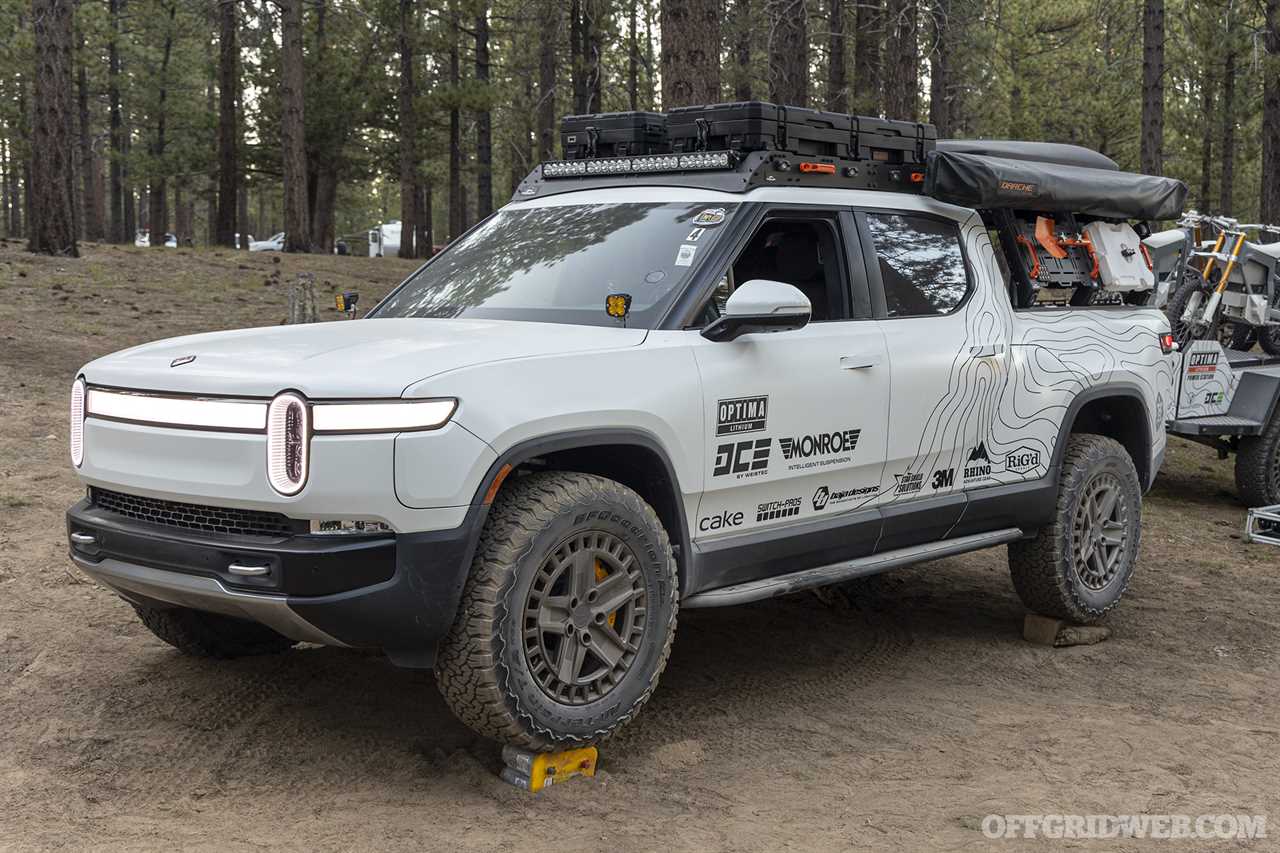
Above: Yes, Optima parked its 7,800-pound Rivian on top of one of its yellow top batteries. And yes, the battery still worked afterwards.
Although I would switch vehicles several times throughout the Overland Summit, I spent most of my time in the last thing you might expect to see on a remote mountain road more than an hour from the nearest town: an electric vehicle. Optima Batteries brought out a pair of modified Rivian R1T and R1S electric trucks built by DCE, an electric-vehicle-specific division of the prominent tuning company Weistec Engineering.
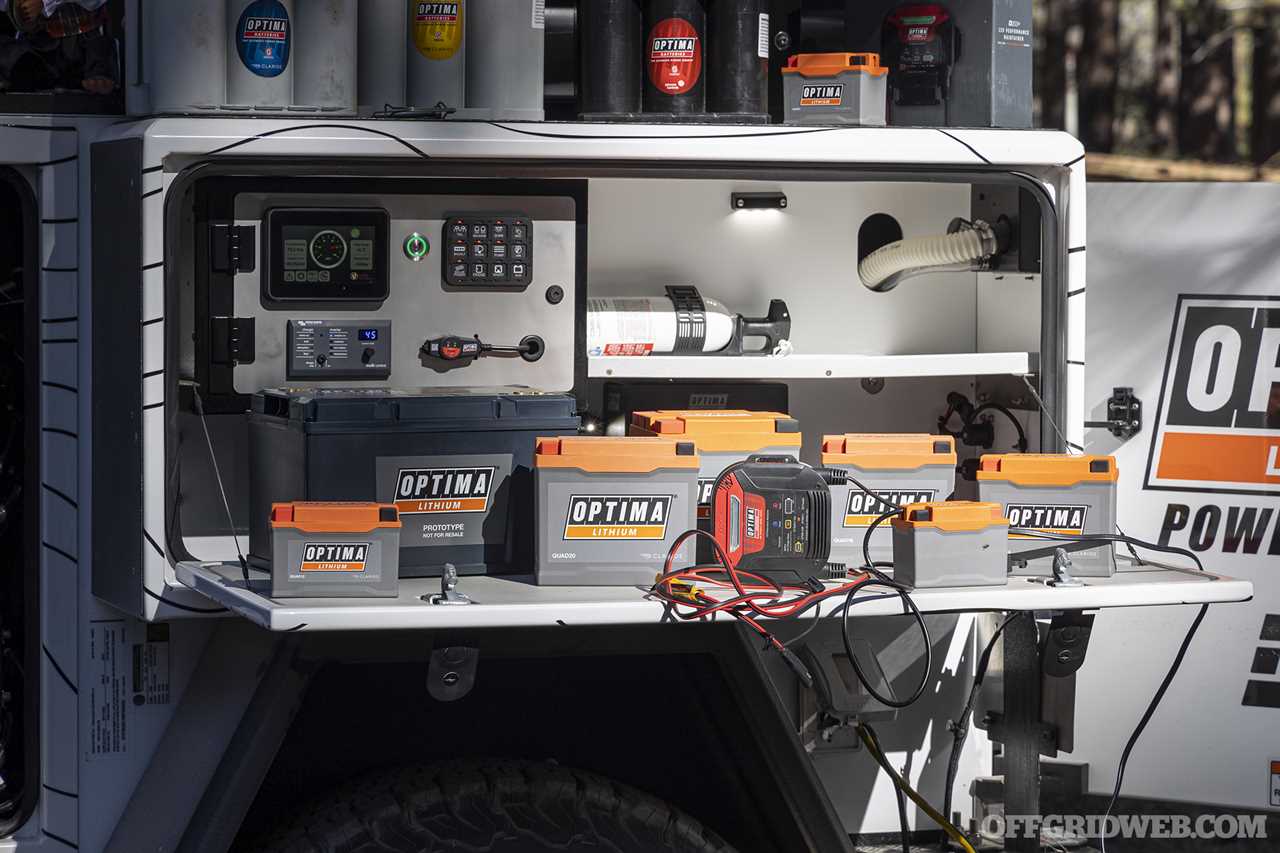
Optima and DCE also worked together to create a very cool Power Station Trailer with 50 kilowatt-hours of battery power and a 1-kilowatt folding solar array. Just as gas-powered vehicles can carry spare fuel, this portable power station eliminates worries about keeping an electric truck charged far from the urban grid.
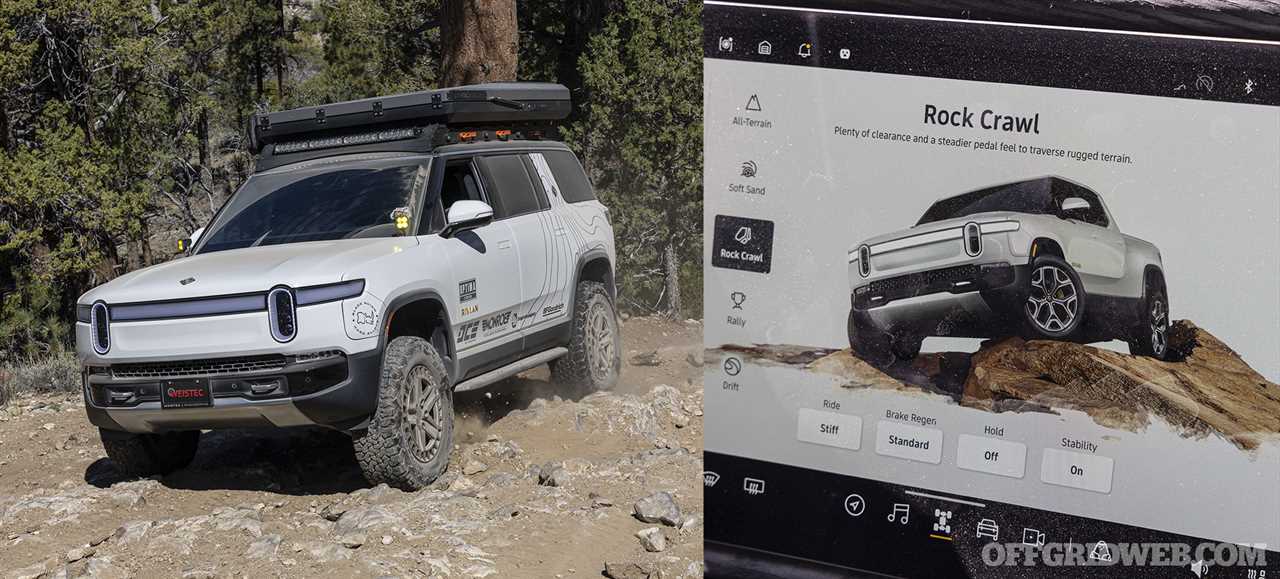
Above: The Optima/DCE Rivian R1T and R1S did surprisingly well on the trail. The driver can select multiple modes on the touch screen, which adjust ride height, stiffness, stability control, regenerative braking, and more.
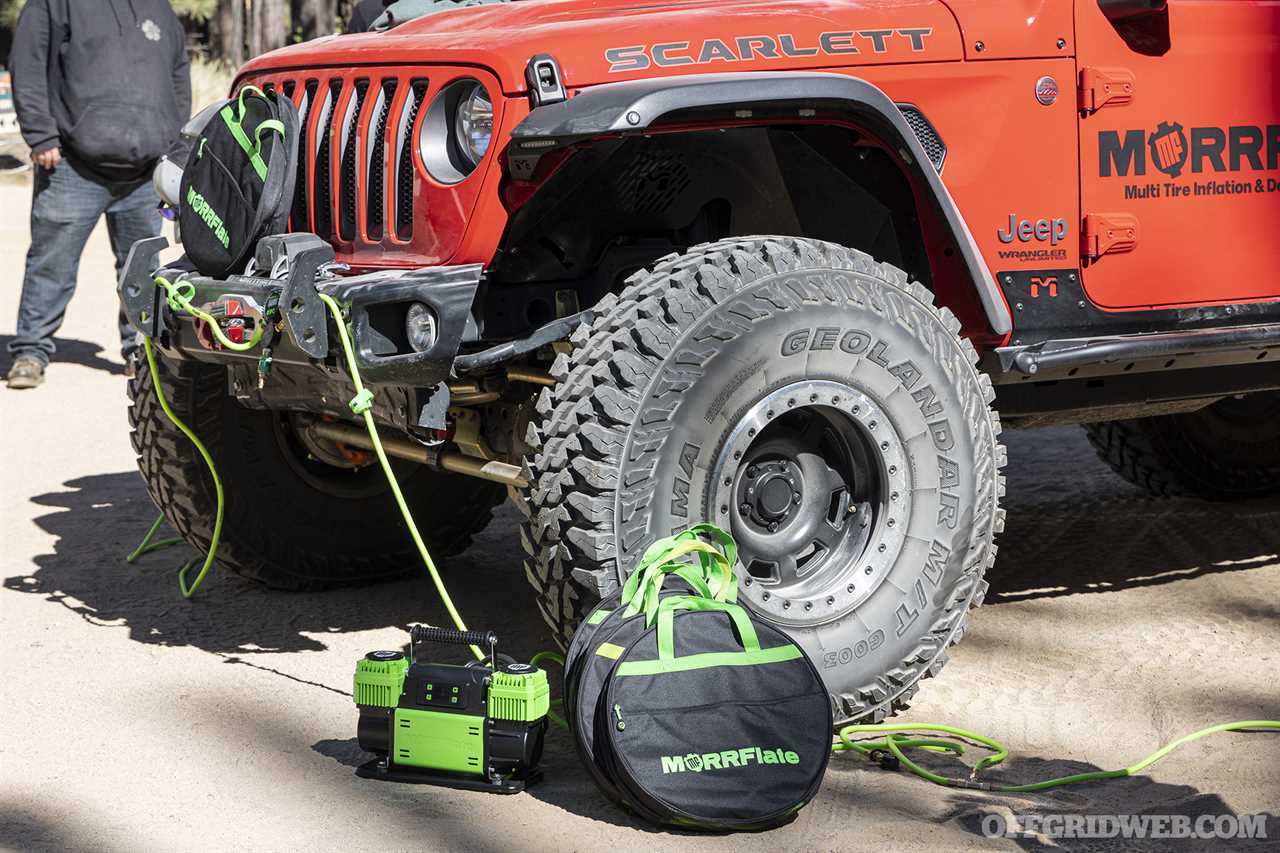
Anyone with off-road driving experience knows the importance of airing down your tires — it provides more grip, improves ride comfort, and reduces the risk of a puncture or blowout. Morrflate founder Tyler calls it “the number one way you can improve off-road performance,” and that's why he developed his company's tire deflation and inflation kits.
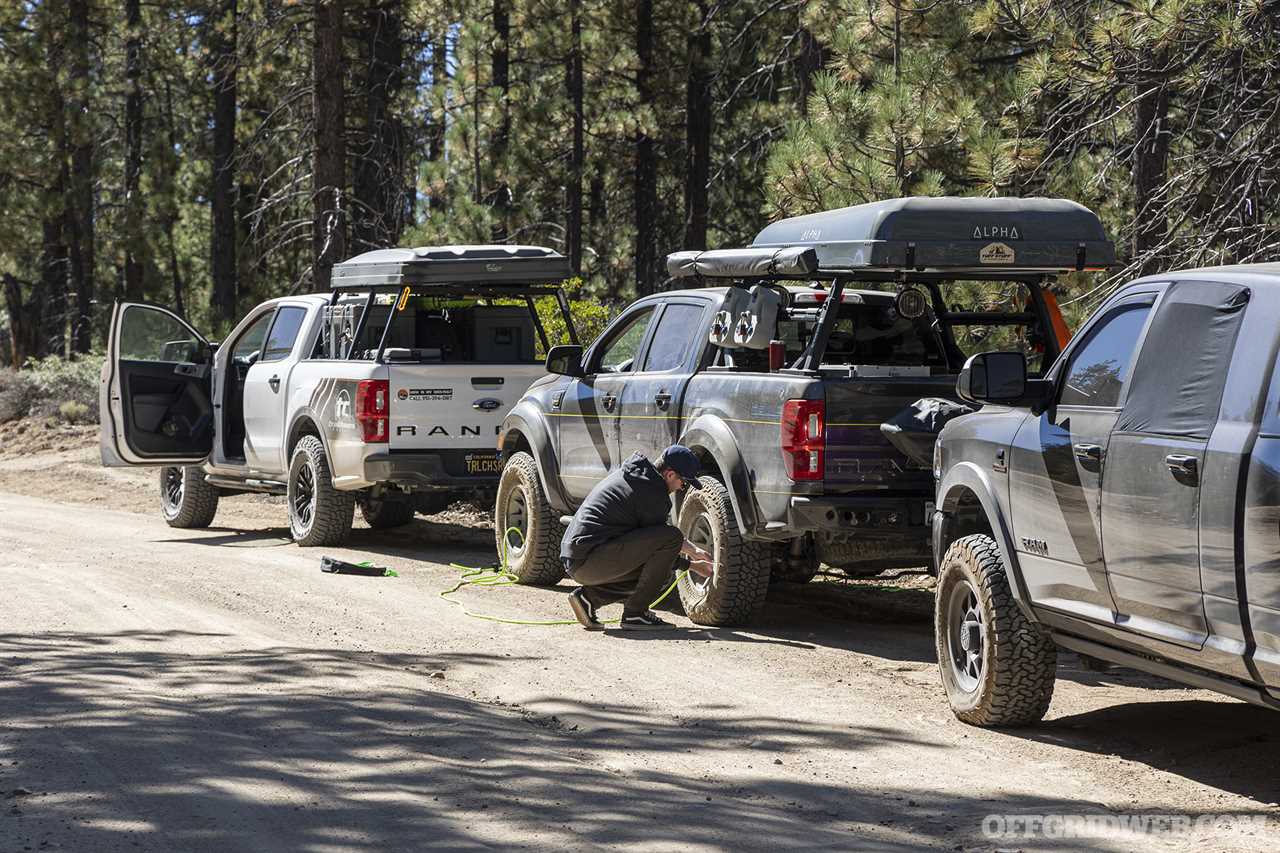
Each driver hooked up all four wheels to a Morrflate system and aired down to roughly 15psi before starting the trail run. By connecting to all four tires at once, the system automatically equalizes pressure, eliminating one of the biggest headaches of airing up and down.
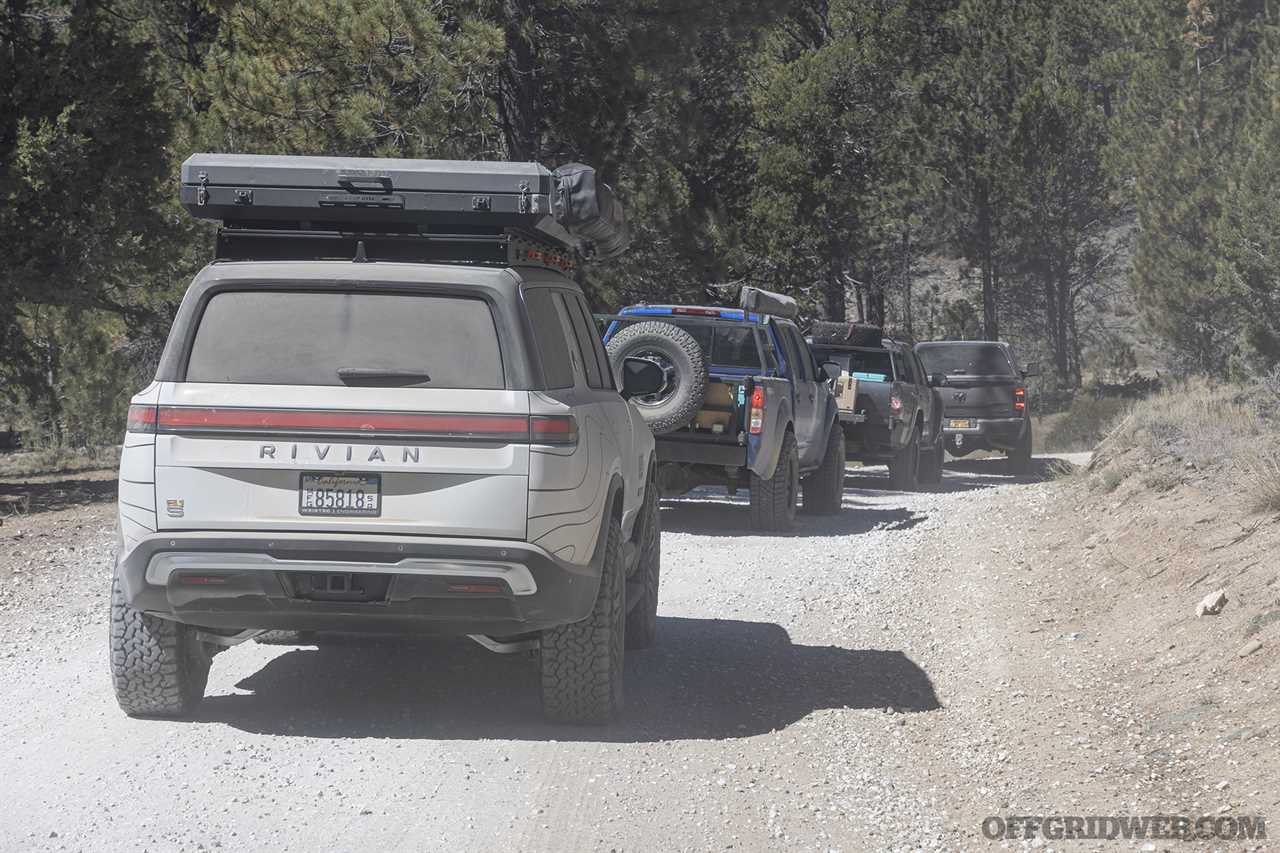
As we started the drive, I was apprehensive about how Optima and DCE's nearly-8,000-pound all-electric Rivian truck would fare on a rutted and rock-strewn off-road trail, but its capabilities impressed me. The air suspension made it the smoothest-riding vehicle in our entire convoy, and the electric motors' instant torque and all-wheel-drive system allowed it to climb over some substantial obstacles. It even has a user-configurable Rock Crawl mode — not something I expected to see in an electric pickup truck. A day on the trail barely put a dent in its range indicator, and the Power Station Trailer meant it could be recharged back at camp.
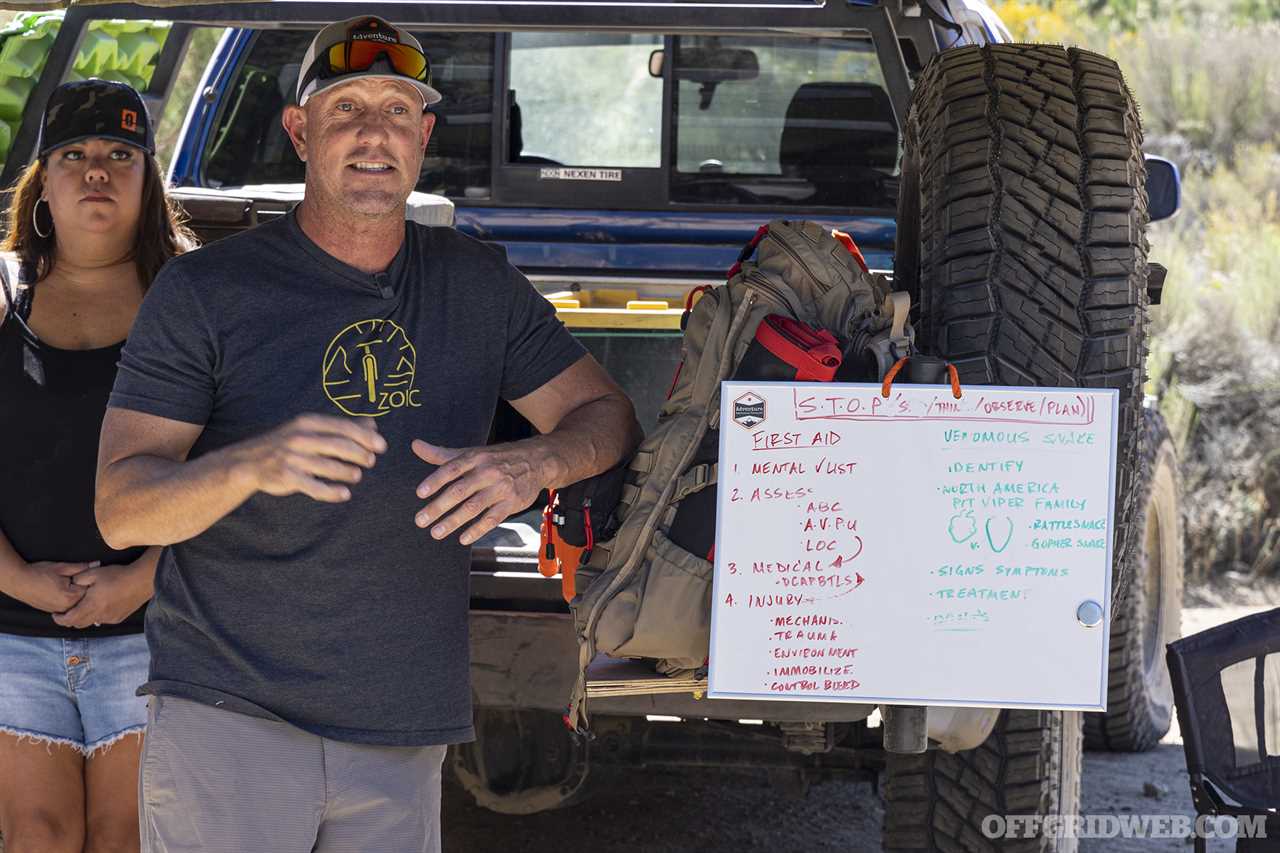
At lunchtime, we stopped in a clearing and circled the wagons for a wilderness first aid demo from local firefighter Steve Barron. He discussed important lessons such as how to assess and stabilize injuries when there's no hospital nearby, and how to prep an injured individual for medevac by vehicle or Life Flight. Snakebites, a potentially life-threatening injury in off-the-grid settings, were also discussed at length. As we've said in our previous articles about that topic, you should never attempt to suck out venom or apply a tourniquet above the bite — the victim needs to remain calm and get to a hospital for antivenom as soon as possible.
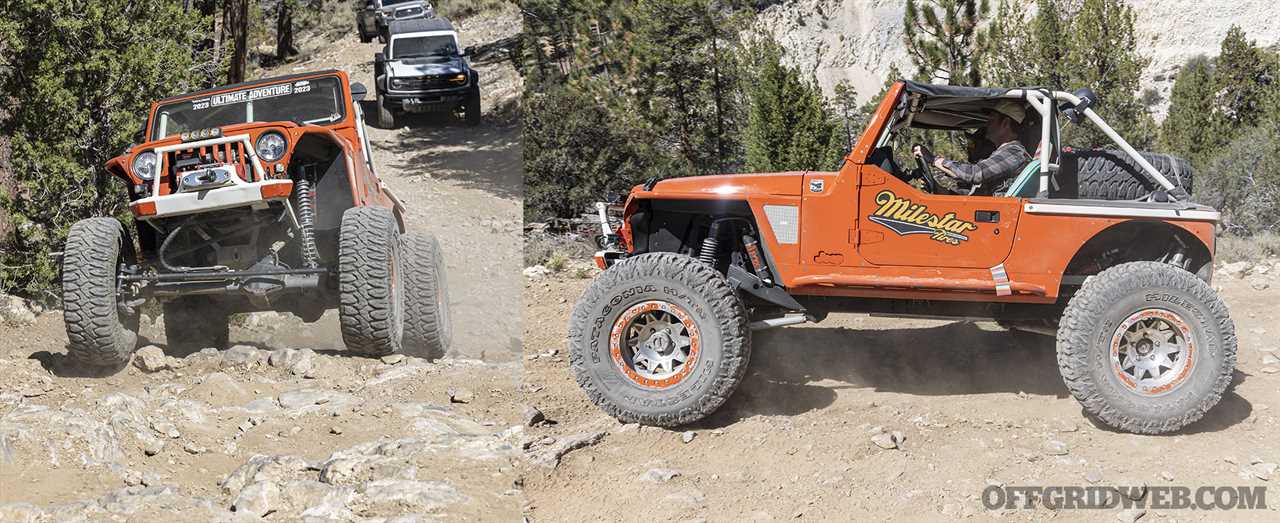
Milestar Tires brought several vehicles to demonstrate the capabilities of its Patagonia A/T Pro and Patagonia M/T-02 tires. It's one thing to hear about how much traction and strength a set of off-road tires has, and another thing entirely to feel it as the tires bounce over basketball-sized rocks. The tires proved themselves on technical sections such as the White Mountain Peak trail, which many of the vehicles in our convoy had to bypass due to its steep ascent over large boulders. Their affordable pricing also makes them an appealing option for budget-minded overlanders.
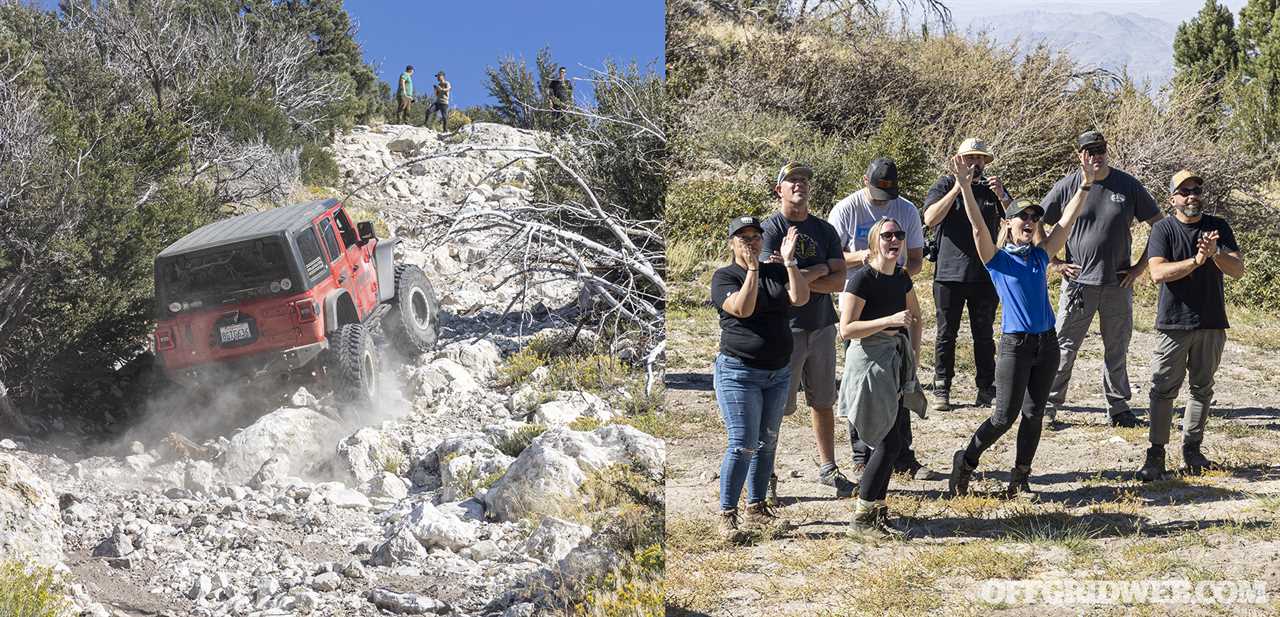
Above: The ascent to the top of White Mountain was a steep and rocky one. Viewers at the bottom cheered as each vehicle made it past the obstacle.
After a long day of driving, we returned to camp in the late afternoon. Stuart Palley, a conservationist and wildfire photographer, hosted a Q&A about wildfire prevention and avoidance — an important skill for anyone who spends time in remote areas that are susceptible to these disasters. He also taught us about LCES, which stands for Look out (e.g. situational awareness), Communications, Escape routes, and Safety zones. Keeping these four concepts in mind while you're navigating through wildfire country will improve your likelihood of making it to safety if a fire starts moving in your direction.

Finally, Melanie Hellwig-White, the CEO of Hellwig Suspension, talked about the value of swaybars for stabilizing overland vehicles. If you've got a loaded-down, top-heavy vehicle such as a Sprinter van or a lifted truck with a rooftop tent, the factory sway bars probably aren't sufficient anymore. This mismatch can lead to an uncomfortable — or even dangerous — amount of lean while driving on twisty mountain roads or over uneven trails. A stiffer Hellwig swaybar can keep all four tires planted when they need to be, while remaining compliant enough to allow suspension flex on the trail.
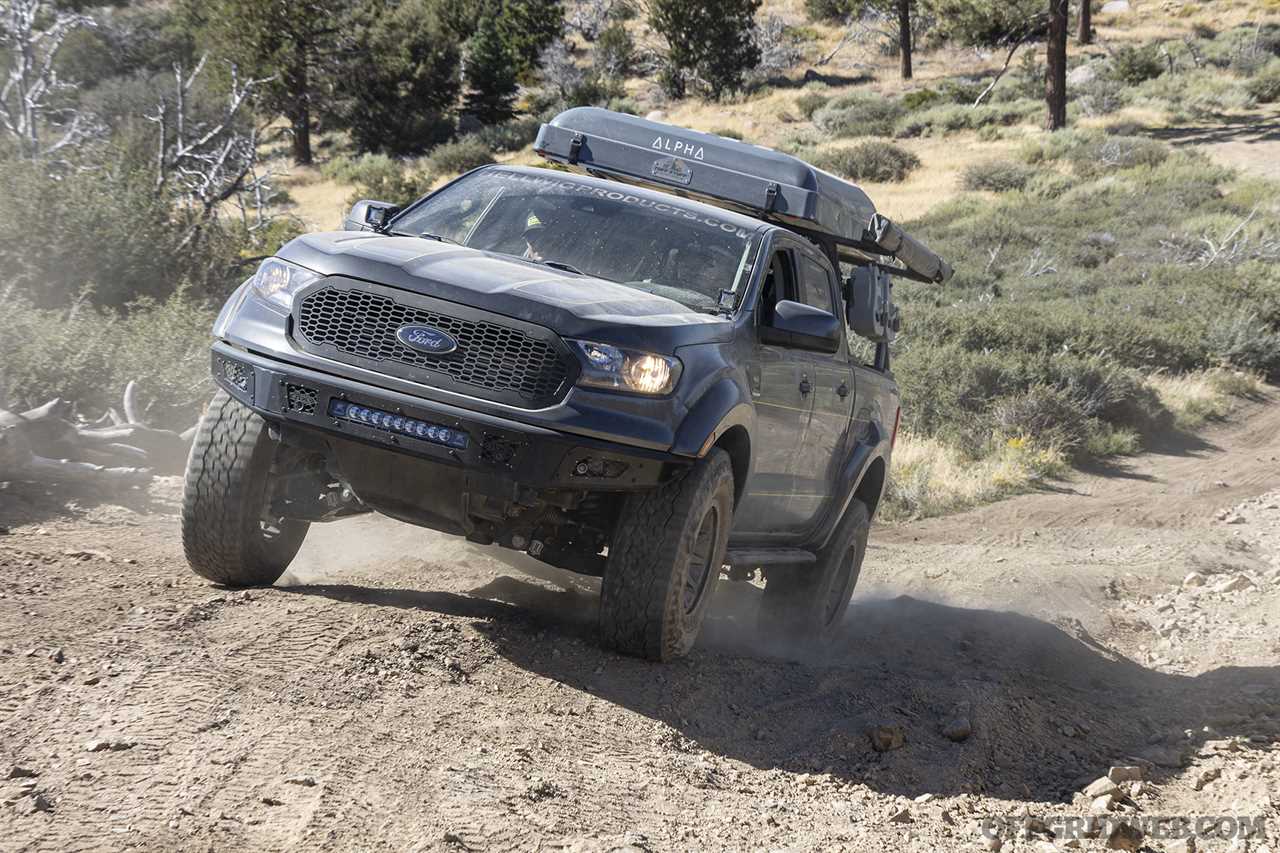
Above: Attendees drove the Hellwig Ranger to feel the difference swaybars can make over uneven terrain.
Day Three: Off-Road Recovery Clinic
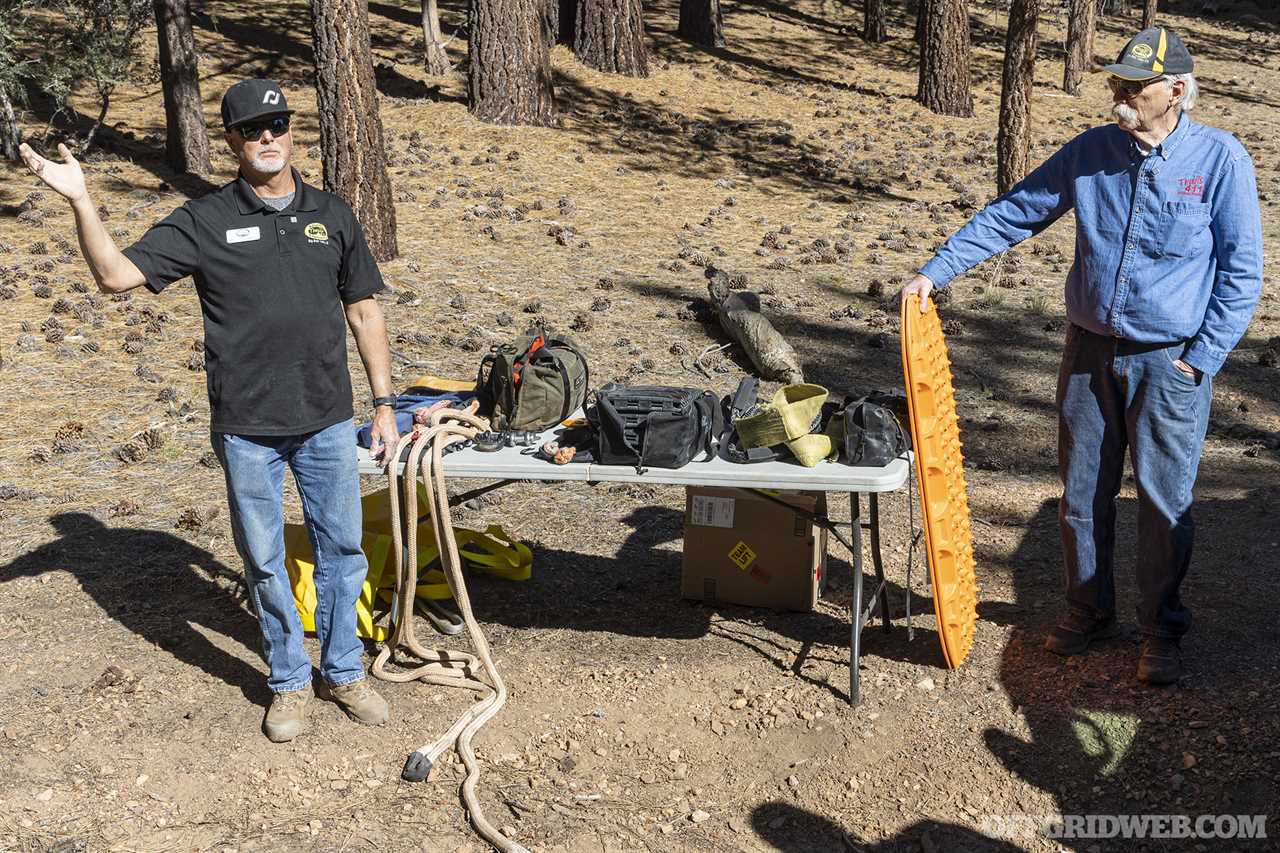
After breakfast on the final morning of the Overland Summit, we gathered around for a DIY vehicle recovery clinic taught by Trails 411. Veteran off-roaders Don Alexander and Bill Stephens showed us what to do (and what not to do) if we get stuck on the trail, as well as key items for an off-road recovery kit. I'll go into more detail about these lessons in a separate article, but for now, I'll leave you with three easy steps that will solve most situations on the trail:
- Try backing up. It's the easy solution, and most of the time, it works!
- If that fails, take a deep breath, examine the vehicle, and evaluate why you got stuck. This will often lead you to a common-sense solution. For example, if you're high-centered, you'll probably be able to see whether it's easier to go forward or backward.
- If both of the previous measures fail, get some help from a friend — it's always a good idea to have one nearby while off-roading. Hook up a tow strap to a secure tow point (NOT a ball hitch) on both vehicles and have your friend give you a small nudge in the appropriate direction. According to Stephens, one strap, a pair of soft shackles, and a second vehicle is enough gear to get you out of 90% of these situations.
Closing Thoughts
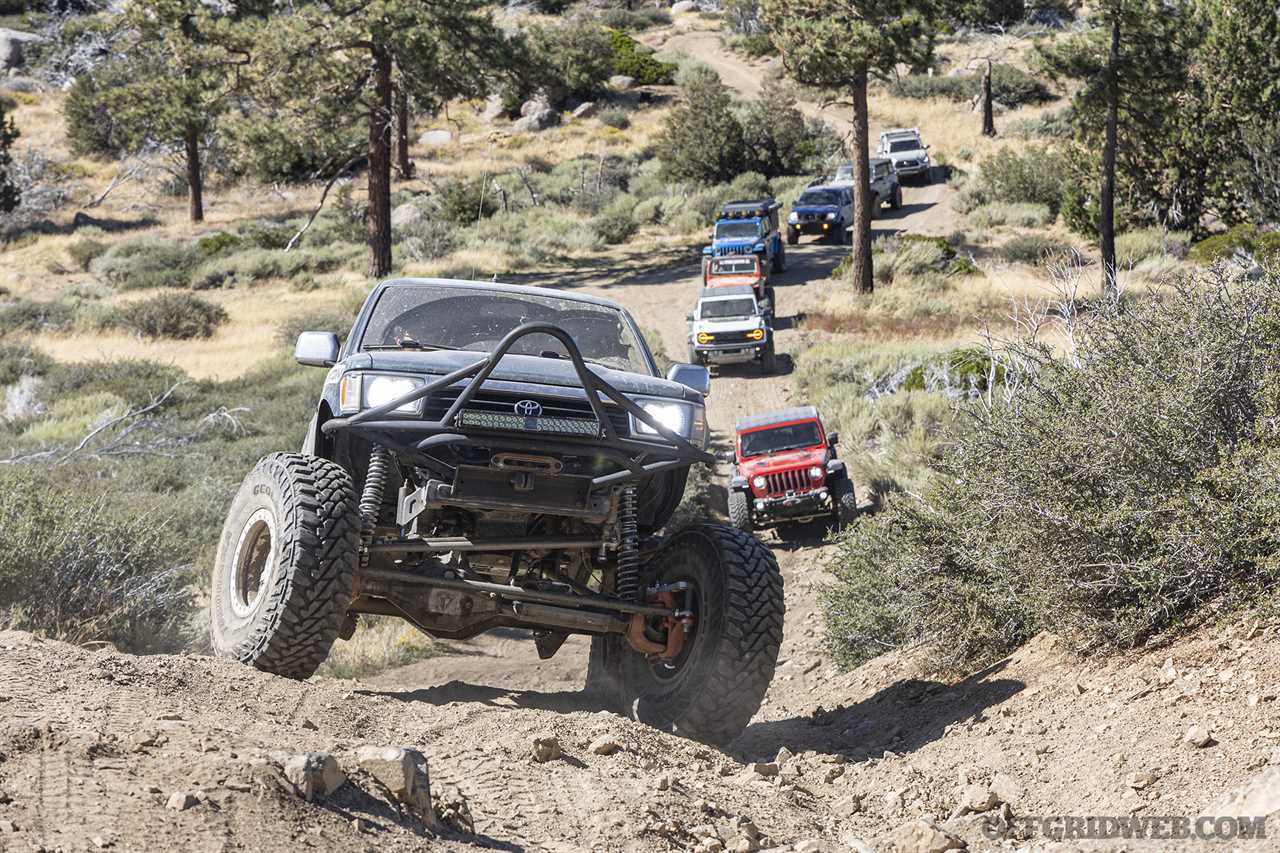
Above: This solid-axle-swapped 4Runner belongs to Tyler, the founder of Morrflate. We appreciate that he's not just another business-savvy guy selling offroad gear — he's a true off-road enthusiast who tests his own products and looks for ways to improve them.
The Overland Summit was a great opportunity for hands-on experiences with a wide variety of gear and candid discussions with off-roading, overlanding, and wilderness survival experts. Rather than just hearing about new products and their features, we got to try them in the setting they were designed for, and that's a valuable thing. We hope to do more long-term testing on a few of the items from the Summit in the future, and there's plenty of additional lessons we can share from this event, so stay tuned.
The post Overland Summit: Testing Offroad and Camping Gear on the Trail appeared first on RECOIL OFFGRID.
By: Patrick McCarthy
Title: Overland Summit: Testing Offroad and Camping Gear on the Trail
Sourced From: www.offgridweb.com/transportation/overland-summit-testing-offroad-and-camping-gear-on-the-trail/
Published Date: Thu, 05 Oct 2023 11:00:04 +0000
-------------------------------------------------------------------------
 CampingSurvivalistHuntingFishingExploringHikingPrivacy PolicyTerms And Conditions
CampingSurvivalistHuntingFishingExploringHikingPrivacy PolicyTerms And Conditions
